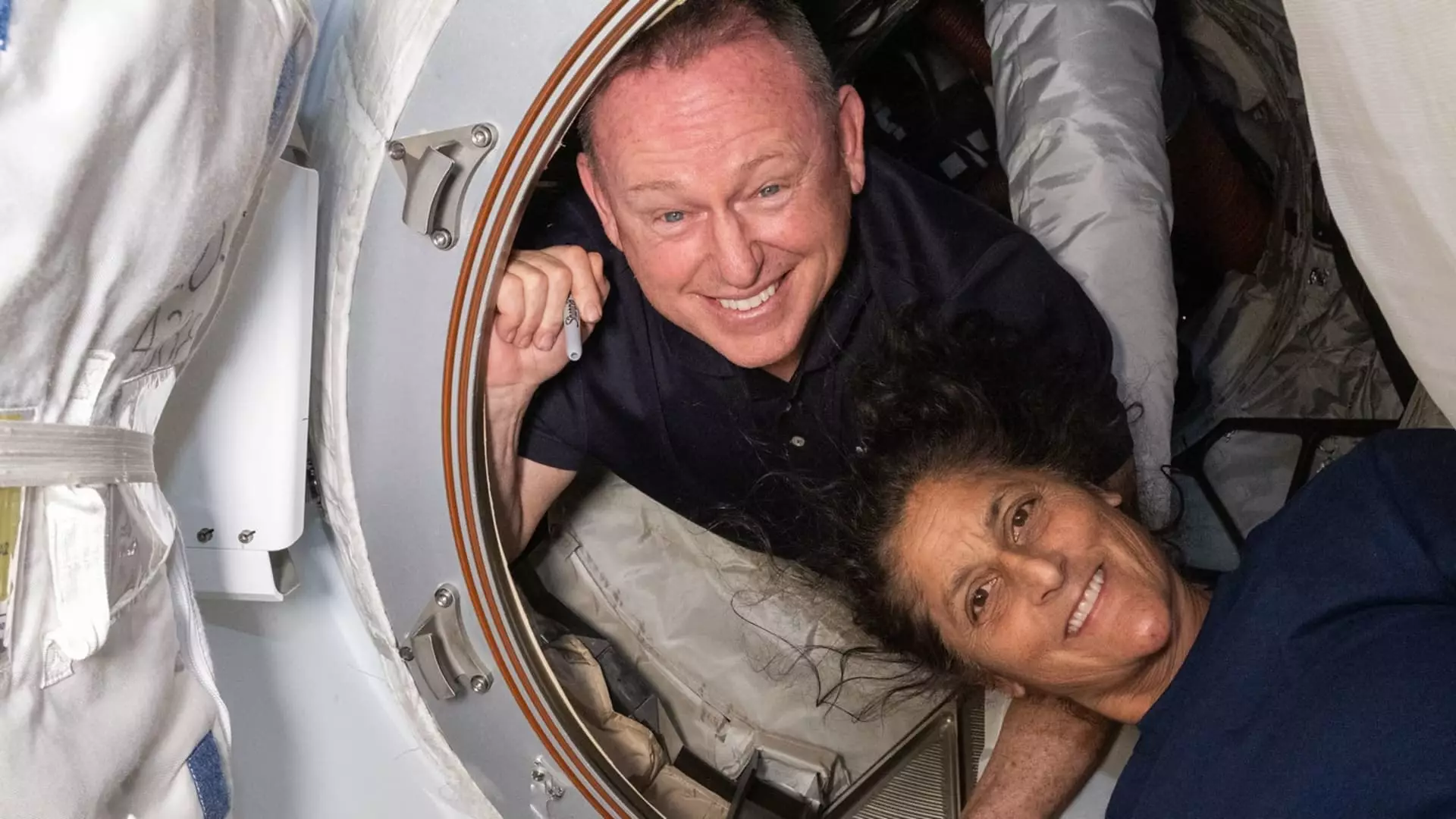The recent return of NASA astronauts Butch Wilmore and Suni Williams from an extended stay at the International Space Station (ISS) is symbolic of the unforeseen challenges that can arise in ambitious space exploration endeavors. What was initially intended to be a brief nine-day mission rapidly spiraled into a protracted ordeal lasting 270 days. The original flight aboard Boeing’s Starliner capsule named “Calypso” was expected to serve as a cornerstone in establishing Boeing as a reliable partner in NASA’s plans for orbital missions. However, a malfunctioning thruster during docking raised alarms about the spacecraft’s capabilities, ultimately transforming what was supposed to be a routine test flight into an unscheduled, and arguably unnecessary, extension.
One cannot help but marvel at the resilience of Wilmore and Williams, yet it raises questions about the bureaucratic inefficiencies that linger in NASA’s decision-making. The choice to return the astronauts aboard a SpaceX Dragon spacecraft—following an empty voyage of the Starliner—suggests a disturbing lack of preparedness on Boeing’s part, as much as it reflects NASA’s reluctance to gamble the lives of seasoned astronauts on a malfunctioning vehicle.
The Political Web Weaves On
This situation gains further complexity amid political dynamics that often overshadow scientific endeavors. The arrival of President Trump ushered in a sentiment that sought to rush certain aspects of space exploration, aimed at showcasing American prowess. While there is merit to pushing forward with ambitious projects, it is hard not to view their actions as a reckless leveraging of humanity’s great strides in science for political gain. The insinuation that the astronauts were “stranded” at the ISS, a claim devoid of evidence, feels disingenuous at best. Stranded they were not; Wilmore and Williams engaged in meaningful scientific work, yet the spin put forth distracts from the shortcomings of Boeing’s Starliner program and NASA’s oversight.
The intertwined relationship between politics and science is often fraught with conflict, but in moments like this, it becomes painfully apparent that decisions rooted in public relations and political optics can ultimately undermine the integrity of scientific missions. The rush to put forth a narrative of urgency distracts from the more crucial task at hand: ensuring safety and advancing technology responsibly.
The Financial Burden of Ambition
Boeing’s struggles with the Starliner program add another layer to this intricate narrative. Having suffered a loss exceeding $2 billion on a project intended to elevate America’s presence in space, it serves as a cautionary tale about the high stakes involved in commercial space ventures. As a nation, we champion competition with the likes of SpaceX, yet such competition must be premised on rigorous testing and accountability. With NASA’s inclination to endorse a system that hinges on the performance of two contrasting entities, it’s imperative we acknowledge that the Elysium of space exploration cannot be sullied by poorly executed missions.
What does this failure mean for Boeing’s future endeavors in human spaceflight? Are they capable of regaining public trust after such a significant setback? These questions plague an industry already tightly bound by public opinion and political oversight, further complicating the thin line between ambition and accountability.
Resilience Amidst Uncertainty
On a personal note, one can’t overlook the sheer fortitude exemplified by Wilmore and Williams during their extended mission. The astronauts managed to maintain a semblance of normalcy while conducting vital experiments and performing day-to-day operations at the ISS. Williams’ remarks about not feeling “abandoned” are intriguing; they reflect a unique perspective that could stem from years of training and discipline in the face of adversity. Still, her desire to return home to her family is palpable, shedding light on the emotional toll such a protracted stay can have.
As we navigate the challenges inherent in space exploration, the stories of astronauts like Wilmore and Williams remind us that exploration isn’t just about technology; it also encompasses the human spirit’s resilience. Yet, are we strategically prioritizing the right elements in our quest for innovation in the cosmos? The balance between efficiency, human welfare, and technological advances is a delicate dance, one that could dictate the success or failure of America’s ambitions in space for years to come.

